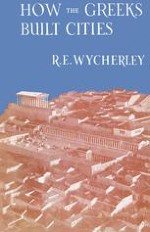1962 | OriginalPaper | Chapter
Gymnasium, Stadium and Theatre
Author : R. E. Wycherley
Published in: How the Greeks Built Cities
Publisher: Macmillan Education UK
Included in: Professional Book Archive
Activate our intelligent search to find suitable subject content or patents.
Select sections of text to find matching patents with Artificial Intelligence. powered by
Select sections of text to find additional relevant content using AI-assisted search. powered by
GYMNASION means a place where people strip for exercise. Gymnastics played a great part in Greek life; gymnastike was complementary to mousike (music and literature) in the normal scheme of education. Suitable areas had to be set aside where boys and young men could run, ride, box, wresde, throw the discus or play ball games. The gymnasium is to be thought of primarily as an extensive athletic ground rather than a closely knit architectural unit. It was a centre for mental as well as physical training, and inevitably became a centre of general social life, like the agora and die stoas. In time appropriate buildings were put up in and around the athletic ground — stoas, baths, dressing-rooms, store- rooms, class- and lecture-rooms and so forth. The palaestra or wrestling-ground was, stricdy speaking, part of the gymnasium, though it could also exist in its own right. But it was an important part; and when athletic buildings attained a well-developed architectural form, the most characteristic part. So it is not surprising that the proper distinction between the two words is not maintained and they tend to become interchangeable.2
